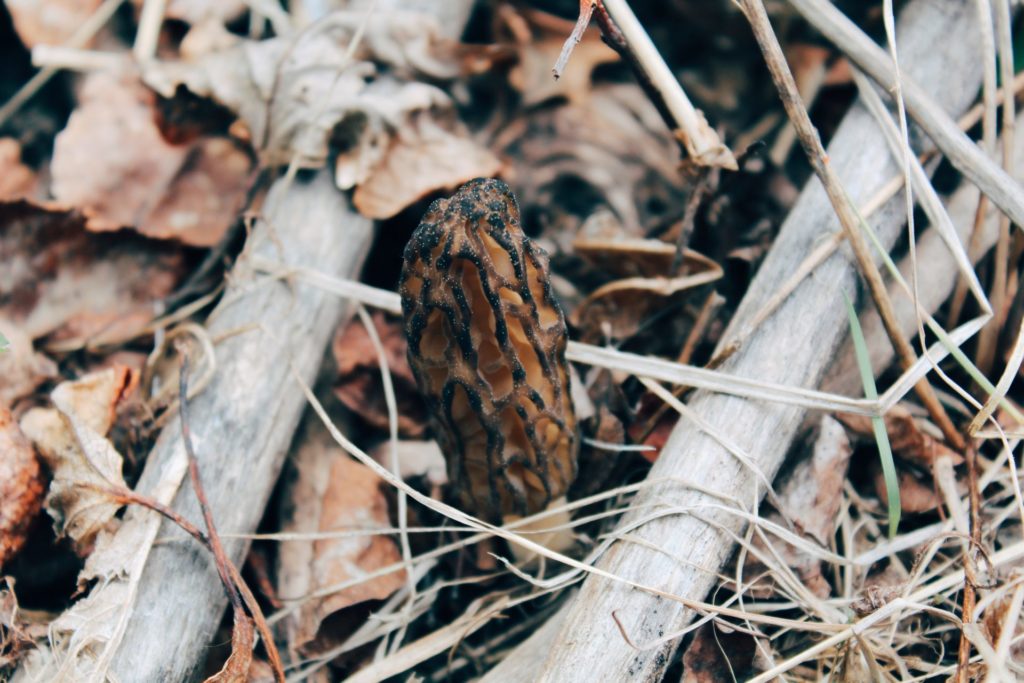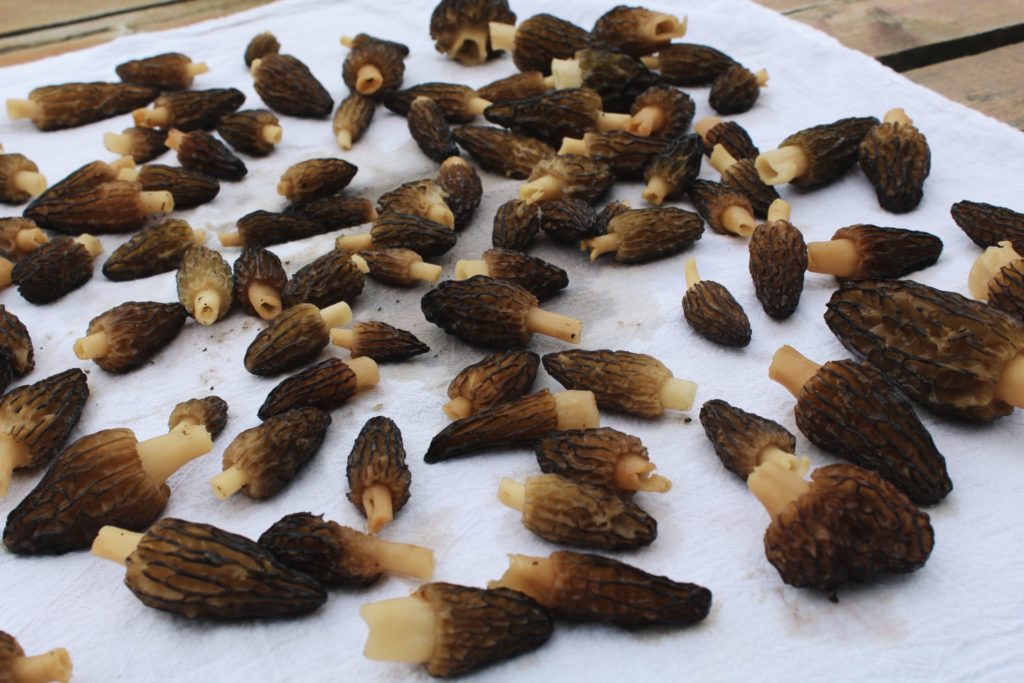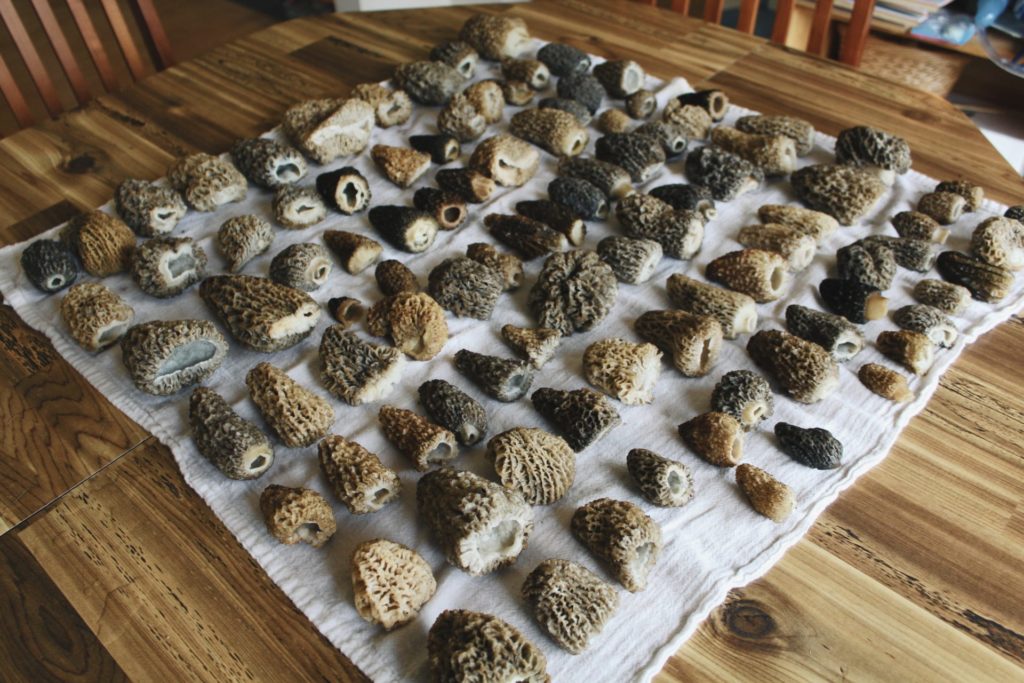What To Know Before You Go
The best and safest way to forage for morels is to go with someone who is already experienced in picking them. Hunting for morels can bring you to remote locations and it is very easy to get disoriented when you are staring at the ground searching for mushrooms. Morels do have look-alikes of varying toxicity, so a good identification book is also handy to have with you. As with any type of foraging, if you have any doubts about the plant or mushroom that is in front of you, do not consume it. Morels must be thoroughly cooked before eating.
Advertisement
What Is A Morel?
Morels are a type of wild mushroom found in the spring. The Morchella genus has a wide variety of subspecies, and therefore morels can vary in size, colour and, to some extent, habitat. Typically oblong in shape, morels have a pitted exterior that looks almost like a honeycomb. The stem attaches directly to the base of the cap, and both cap and stem are hollow throughout.

Where Are Morels Found?
Morels can be placed into two categories, either naturals or fire morels. While both are delicious, in our family we prefer the naturals as some fire morels can taste a bit gritty from the ash if not cleaned thoroughly. Picking in an old burn can be hot and dirty work, whereas picking morels in a nice stand of trees can be very enjoyable if the bugs don’t eat you alive!
Advertisement
The naturals are deep brown in colour, and often found in stands of aspen trees hiding amongst old leaves on the ground. Somewhat difficult to initially find, be careful where you step because if you find one, there are probably more scattered around in a very close vicinity. Sometimes it helps to get a different perspective and either crouch down or stand on a log – they often appear out of nowhere. They often are peeking out from behind downed trees or in a disturbed pile of dirt.

Fire morels are the ones that bring droves of mushroom pickers into a region the year following a particularly intense fire season. They can be blonde, grey or dark brown in colour. While it is not a guarantee that there will be morels at every fire, picking a late summer fire versus a spring fire seems to up your odds. We prefer to pick on the edges of burns, where needles litter the ground and they can be found in the shade of fallen trees or growing out of the ground where the root wad of a tree has pulled up. The first year after a fire is most prolific, but morels can be found in the following years.
Advertisement

When Do Morels Appear?
The morel season in the Lakes District starts in May and can continue into late June or early July, depending on whether you are picking naturals or fire morels. The tell-tale sign to be on the lookout for naturals is to watch the aspen trees – once they start to green up, the morels typically start to appear. Depending on the weather, they can be picked into the beginning of June but can be incredibly difficult to spot once the undergrowth of the forest grows up. Fire morels have a more extended season, from mid-May through to July. This is all dependent on temperature, precipitation, elevation and a variety of other factors.
How To Pick Morels
Every morel hunter you talk to will have their individual preferences on how to pick. You will want to either use a small knife to slice the stem while picking, or just pinch off the stem. Leaving the roots and dirt behind keeps your mushrooms clean. Use a mesh bag or a basket to collect the morels, and place into a basket or container with holes for air circulation if picking a larger quantity.
How Can Morels Be Preserved?
Fresh morels last around one week in the fridge and are most commonly preserved by drying. We use our dehydrator on a low setting to preserve morels for the winter months, but we find fresh morels in the spring to be a special treat fried with just a little butter and salt.